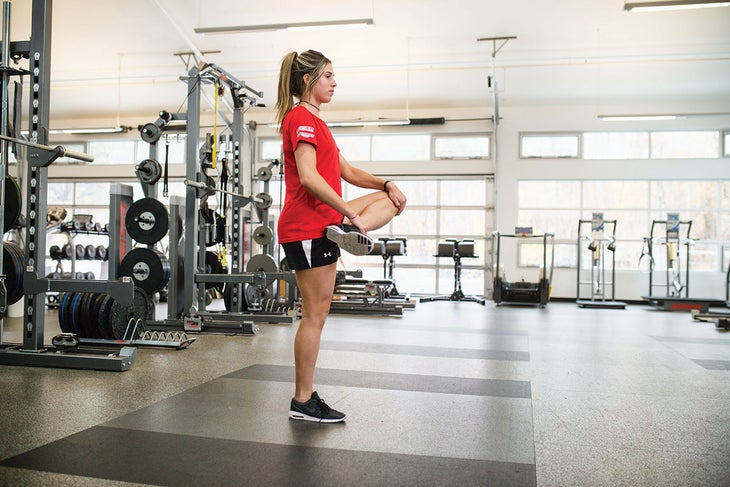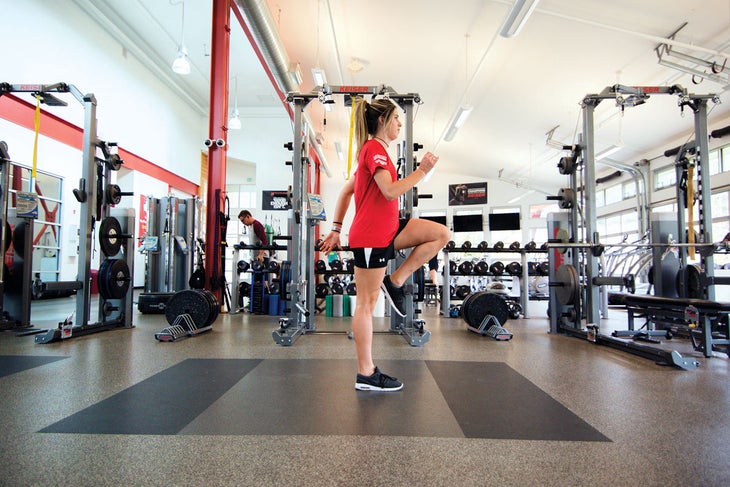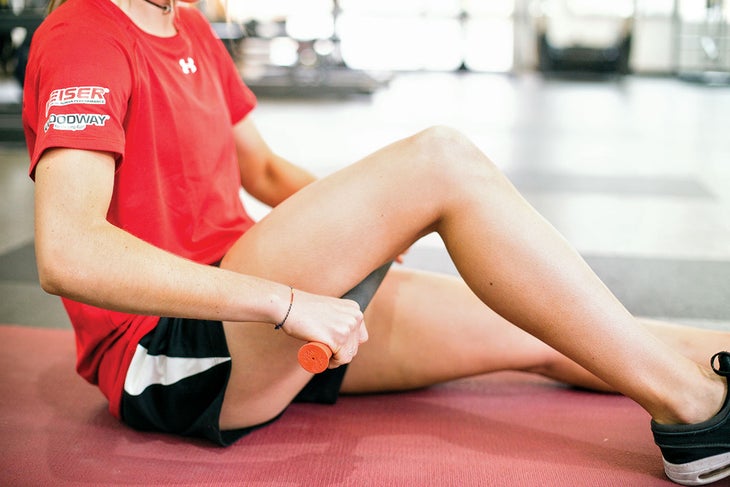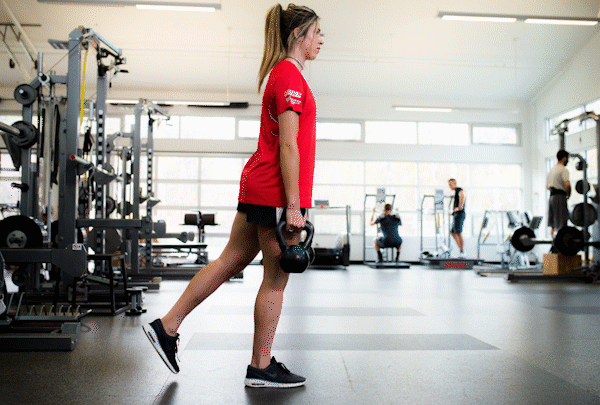Heading out the door? Read this article on the new Outside+ app available now on iOS devices for members! Download the app.
Because skiing is the greatest sport there ever was, we don’t want you to miss a single day this season due to injury. So here’s a quick public service announcement: Your biggest risk of injury on the hill is linked to your overall fitness. Injuries tend to happen when we’re tired and our muscles are fatigued. When our quads are burning, we start skiing in the back seat, putting us at risk of one of the most common ski injuries: torn knee ligaments (like ACLs and MCLs). The solution? Get in the gym and work those quads so they won’t get tired, right? Absolutely, but don’t forget about your glutes and hamstrings, which help balance the stress put on the quads. Developing muscle symmetry is key to preventing injuries.
Read more: Five Fitness Tools for Skiers
When we talk about symmetry in the body, we’re talking about symmetry from the left to right, and from front to back. Let’s focus on symmetry from front to back. The activities we do every day—walking, climbing stairs, sitting, and standing—strengthen the quads more than our backside muscles, making our quads our agonist, or dominant, muscle group. In order to have symmetry in the body and prevent injuries, we need to also train the antagonist muscle group—in this case, the glutes and hamstrings. And to really bulletproof the body against injury, don’t just strengthen these muscles, but increase mobility in them as well. Here’s an example exercise sequence to increase mobility, flexibility, and strength in the often-overlooked glute/hamstring complex.
Figure 4 Stretch

- Movement Prep: Mobility
- Standing upright with good posture, cradle one knee and foot in front of you with both arms while balancing on the other leg. Hold for three seconds, then switch legs.
Marches

- Movement Prep: Motor Control
- Exercises that target coordinated movements through space are critical to skiing. Begin with strong, upright posture. Lift your front knee up to 90 degrees while extending the opposite elbow out in front of you at 90 degrees. Connect the arms and legs as you march forward.
Foam Roll

- Movement Prep: Flexibility
- Foam rolling is a great way to loosen (and stretch) your muscles and connective tissue. Rolling out before you exercise will help make your workouts more efficient. When rolling your hamstrings, use a massage stick roller or rolling pin. Apply pressure and roll up and down the length of your hamstring until pain subsides, or you can’t stand the pain anymore.
Single-Leg Deadlift

- Strength Exercise
- Use lighter dumbbells or kettlebells in each hand to begin this exercise, then work your way up to more resistance. Keeping a strong upright posture, shift your balance to one leg and slowly extend the other leg and heel straight back behind you as you lower your chest and kettlebells towards the floor. Maintain a slight bend in the standing leg, but keep the upper body and extended leg in a straight line. Slowly return to the upright position, then repeat.
Read more: Three Common Ski Injuries (And How to Prevent Them)
Learn more and get access to a comprehensive 8-week training plan to prevent injury and gain strength by registering for AIM AdventureU and SKI Magazine’s Ski Injury Prevention course.
Originally published in the January/February 2019 print edition of SKI Magazine. For more great tips and tricks on how to improve your skiing, SUBSCRIBE NOW.